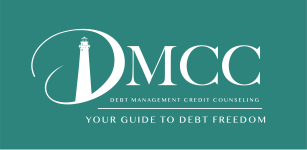FEATURE ARTICLE: Get rid of bank fees once and for all
There’s nothing worse than getting punished for doing the right thing. And that’s just what happened to a mom and her 18-year-old son when he opened a checking account at a local bank in McCullom Lake, Ill. His mom encouraged him to open the bank account as a way to teach him how to handle a bank account. And that’s when the trouble began.
After moving some money from checking to savings, Daniel Ganziano’s checking account balance fell to $4.85. Because of the low balance, the bank levied a $9.95 maintenance fee. The fee overdrew the account by $5.10, which triggered another fee of $28 that the bank charged daily. In just two weeks, the fees totaled $229.
This story, reported by the Chicago Tribune, is yet another example of banking fees gone wild. There are, however, a few simple steps you can take to eliminate banking fees once and for all.
1. Don’t assume small banks have small fees: With the Occupy Wall Street movement, there has been a big push to move from big banks to small, community banks. While smaller banks may be a great option for some, don’t assume they are free. Small banks, including credit unions, charge fees, too. And in some cases, they may not be the best option. Nothing replaces researching banks and making the best decision for your financial needs.
2. Go online: Some of the best banking options come from online financial institutions. Because online banks don’t have the cost of building out a network of physical branches, they often charge less in fees and pay higher interest rates.
3. Watch minimum balance requirements: It’s not uncommon for a bank to waive a monthly maintenance fee, but often you must maintain a minimum balance. It’s important to understand the terms of the maintenance fee before opening an account. And if a minimum balance is required to waive the fee, make sure you meet this requirement.
4. Monitor your account: There are a lot of good reasons to monitor your bank account. Of course, one of the most important reasons is to watch for unauthorized transactions. But keeping a close eye on your account will also help you spot bank fees that can sneak up on us. Because bank fees tend to multiply quickly if the account is overdrawn, addressing the issue as soon as possible is paramount.
5. Your bank may not be best for your children: Accounts designed for children often pose special problems when it comes to fees. Because most children do not keep a lot of money in an account, fees can quickly erode what little money they have. As a result, a parent’s bank may not be the best option for children. I’ve found that the best bank accounts for children are often online banks with no fees.
If you are wondering what happened to the bank fees charged to Daniel Ganziano, the bank eventually waived them. But it took the involvement of Jon Yates (he writes the “What’s Your Problem” column for the Chicago Tribune) before the bank would budge.
www.usnews.com
MONEY SAVING TIP: Stockpile sale items
Many avid couponers stockpile large amounts of nonperishable groceries and toiletries purchased on sale. Carrie Kirby, who blogs for Chicagonow.com/frugalista, once filled the entire cargo hold of her Subaru with cans of her favorite soda. “My basement shelves hold enough of things like toothpaste and cereal — often purchased for 25 cents or less — to last our family six months to a year,” she says.
And if a family member gets ill or loses a job, you’ll have a nicely stocked food pantry during a rocky time.
www.bankrate.com
DID YOU KNOW…to add back in the income tax when determining how much it costs you to buy things?
The sales tag on the leather jacket you want says that it costs $1,000. You know to add in the sales tax to determine the full price, which is perhaps 5% higher, or $1,050. But even that is not the true full price.
You can’t buy the leather jacket by earning $1,050. You need to have $1,050 in take-home pay to buy it, and that means that on a pre-income-tax basis, you need to earn a good bit more, perhaps $1,250.
It’s true, of course, that the money that goes to income tax is not yours to spend or save. Refraining from buying the leather jacket will not get it back for you. The other side of the story is that paying income tax hinders your effort to win financial freedom early in life as much as paying sales tax. Mentally adding back the income tax helps you appreciate how many hours of labor it takes to obtain a jacket with a nominal price tag of $1,000.
